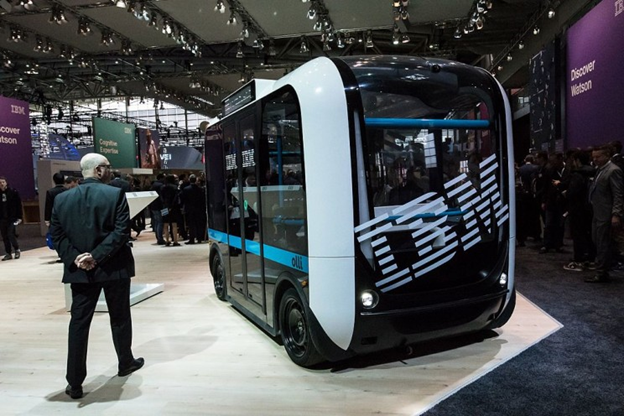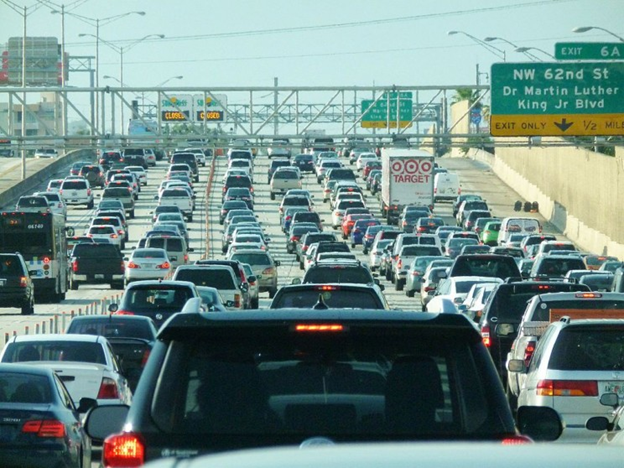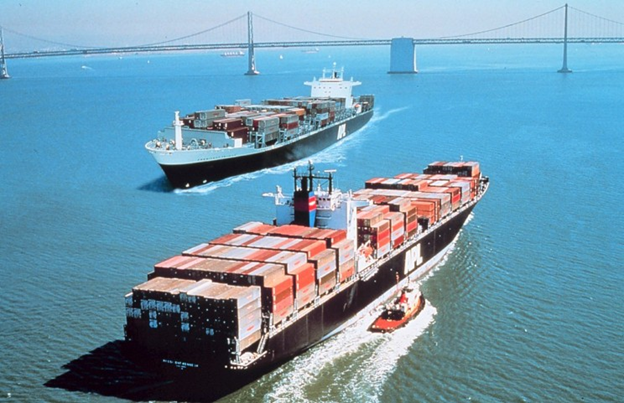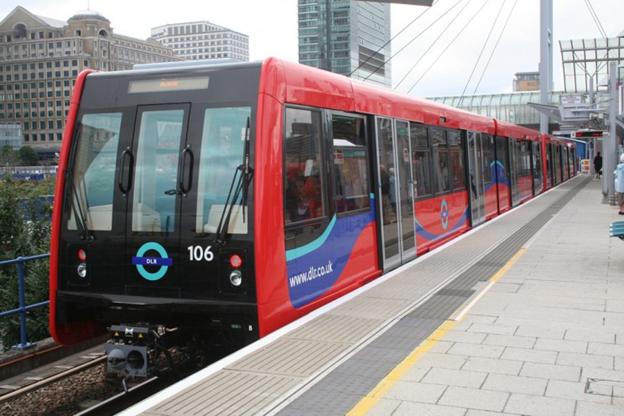
How AI can help transport:
Modern Transport problems arise when it is difficult behavior in a system according to the best possible pattern, being affected by traffic, human errors or accidents. In such cases, unpredictability can be helped by AI SERVICES
AI uses observed data to make appropriate decisions. NNs and GAs are perfect AI techniques to deal with this kind of unpredictability. AI is under development and implemented in different ways. Some examples are given below:
· Improve public safety: Citizens’ safety improves by tracking crime data in real-time when traveling by public transit in urban areas. It helps the police increase their efficiency by patrolling and keeping their citizens safe.
· Corporate Decision Making: The road freight system can use precision estimation techniques to measure its size using AI techniques, which facilitate Transportation Company planning. Also, AI can design and implement many decision tools for transportation. This will productively impact future companies’ investments.
· Autonomous Vehicles: Self-driving cars and trucks have been of high interest over the past few years. In the commercial sector, Uber and Elon Musk have manufactured self-driving trucks to reduce the number of accidents on roads and increase productivity.
· Traffic Methods: Transport is greatly affected by traffic flow. Traffic congestion in the US costs $ 50 billion a year. If this data is adopted for traffic management by AI, it will allow for systematic traffic patterns and congestion to be significantly reduced.
Many similar systems are already in place. For example, smart traffic light algorithms and real-time tracking can effectively control high and low traffic patterns. It can also be applied to public transport for proper scheduling and routing.
· Pedestrian safety: Using AI to evaluate pedestrian and cyclist routes can reduce traffic accidents and injuries, which can completely reduce traffic usage and emissions altogether.
Also Read AI In Transportation: Artificial Intelligence in the Transportation Industry
The impact of AI on transportation:
Benefits:
InOctober 2016, Uber announced the Otto-made driverless truck, which successfully ran 120 miles at 55 mph with no problems. Also, Daimler trucks produced an 18-wheeler semi-autonomous truck with an auto-pilot system.
With the increased use of AI, labor costs in this sector are constantly decreasing, leading to higher profits for industry players. Stopping for long driving hours and a break is no longer a concern with fully automated flights.
Beyond straightforward labor costs, safety and traffic hazards are greatly affected by AI. The number of accidents involving truck drivers at night is a big problem and can be significantly improved with the use of smart unmanned vehicles.
The staff and financial costs of these accidents are considerable. Auto-pilot or fully unmanned vehicles allow the driver to be suspended without causing serious accidents. Some AI trucks have the unique feature of assessing hazards and addressing the health problems of people around the truck, detecting a heart attack, and emergency services.
Errors:
Automated trucking has been debated among 3.5 million truck drivers in the US alone.
Development means that autonomous trucks, ships, and planes will translate into the future, and any vehicles in the future will become completely unmanned. Job flow is a major issue for truck drivers, taxi drivers and other members of the industry. Social professionals have argued that job skills can be transferred or developed into other fields, but the tensions are high.
The future:
It is predicted that by 2020, there will be 10 million self-driving vehicles on the road and more than 250 million smart cars. Tesla, BMW, and Mercedes have already released their autonomous cars and they have proven to be very successful.
Experts such as Elon Musk and Stephen Hawking predict that AI will be a gray area when humans cannot grasp the source of AI decisions.
However, we can get excellent productivity improvements in many industrial sectors. Interstate driving in the US and delivering products to customers can be an easy task for companies, increasing their profits.
Also Read: How Automotive Industry Is Evolving With Artificial Intelligence?
As the transportation industry becomes more data-driven, the talent profile will also change, as new skills are needed in the workforce to keep up with the ongoing changes. Companies need new strategies to navigate this dynamic environment. The pre-scouted helps develop such strategies.
1. Autonomous cars: Driving toward the future:
Autonomous cars have quickly moved from the realm of sci-fi to reality. Although early-stage, these AI-powered vehicles could radically change how we approach A to B shortly.


Source: Grendelcon / Wikimedia Commons
2. Self-driving trucks: redefining multiple industries:
From snow plowing to collecting garbage, self-driving trucks soon take on most of our dirty work. The technology behind these trucks can also be used in freight transport, shipping 2,000,000 pallets each year.


Source: Steve Jurvetson / Wikimedia Commons
3. Driverless buses: A safe way to travel:
One of the biggest areas where AI can make a huge impact is public transportation. Driverless buses are already popping up all over Europe, using sensors, cameras, and GPS to safely transport passengers to their destinations.


Source: Rudolf Simon / Wikimedia Commons
4. Olli by Local Motors:
Two years ago, Local Motors Olli — an autonomous vehicle driven by IBM’s Watson. In addition to being driven by AI, Ollie is also fully electric, representing a new wave of smart, sustainable vehicles.


Source: Frank Schwichtenberg / Wikimedia Commons
5. Artificial Intelligence Traffic Management: Elimination of traffic jams:
Machine learning will soon be used to predict and prevent traffic jams. Engineers in both Singapore and China are working on traffic management systems that process complex data to advise drivers on the best routes.


Source: B137 / Wikimedia Commons
6. SURTRAC Rapid Flow Technologies: Decentralizing traffic flow:
SURTRAC is essentially a traffic control system by Rapid Flow Technologies. Designed specifically for urban areas, it allows the lights at intersections to respond to vehicle currents on a personal level rather than as part of a centralized system.


Source: Mike Gonzalez / Wikimedia Commons
7. To simple: At the forefront of self-driving trucks:
China-based Tusimple received $ 55 million in funding last year to bring its self-driving trucks to the US. Their trucks use long-range sensors with a full observation range and its deep learning AI can detect and track objects using its multiple cameras.


Source: Xuejc1988 / Wikimedia Commons
8. Drone Air Taxis: Traveling by Airplane:
Drones have already been made in delivery systems and soon they can also be used as taxis. Uber already has its sights on electric flying taxis and Dubai 2017 saw the debut of the drone taxi.


Source: Ben Smith / Wikimedia Commons
9. Remote-Controlled Cargo Ships: Get Trade Roots Technical Upgrade:
Public transport is not the only industry that can benefit from the advancement of artificial intelligence. Rolls-Royce has been working on unmanned cargo ships for the past several years and is expected to launch by 2020. These ships are remote control and are expected to pave the way for fully autonomous ships in the future.


Source: Public Domain / Wikimedia Commons
10. Driverless Trains: The ability to carry large numbers of passengers:
This year London tested the first autonomous train in their underground system, and most countries are ready to follow suit. One of the main advantages of automated trains is that they can carry more passengers, as space is no longer required for the driver’s cab.


Source: Hippotack / Wikimedia Commons
11. Bio Transport Tickets: Never go without your ticket:
Last year’s story of a Sydney man carrying his travel card in his hand has gone viral and is a sign of things to come. Travelers in Sweden are already testing microchip implants as tickets, and technology saves enormous money for fare evasion.























